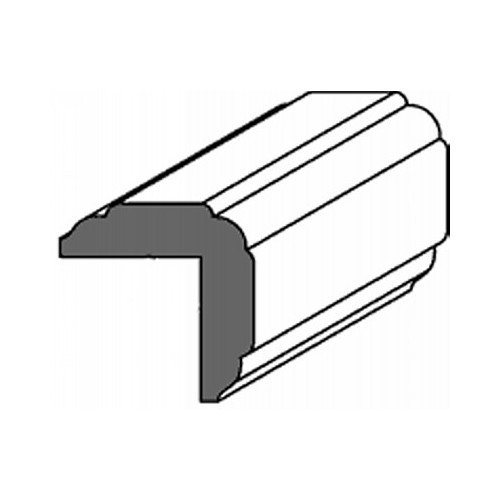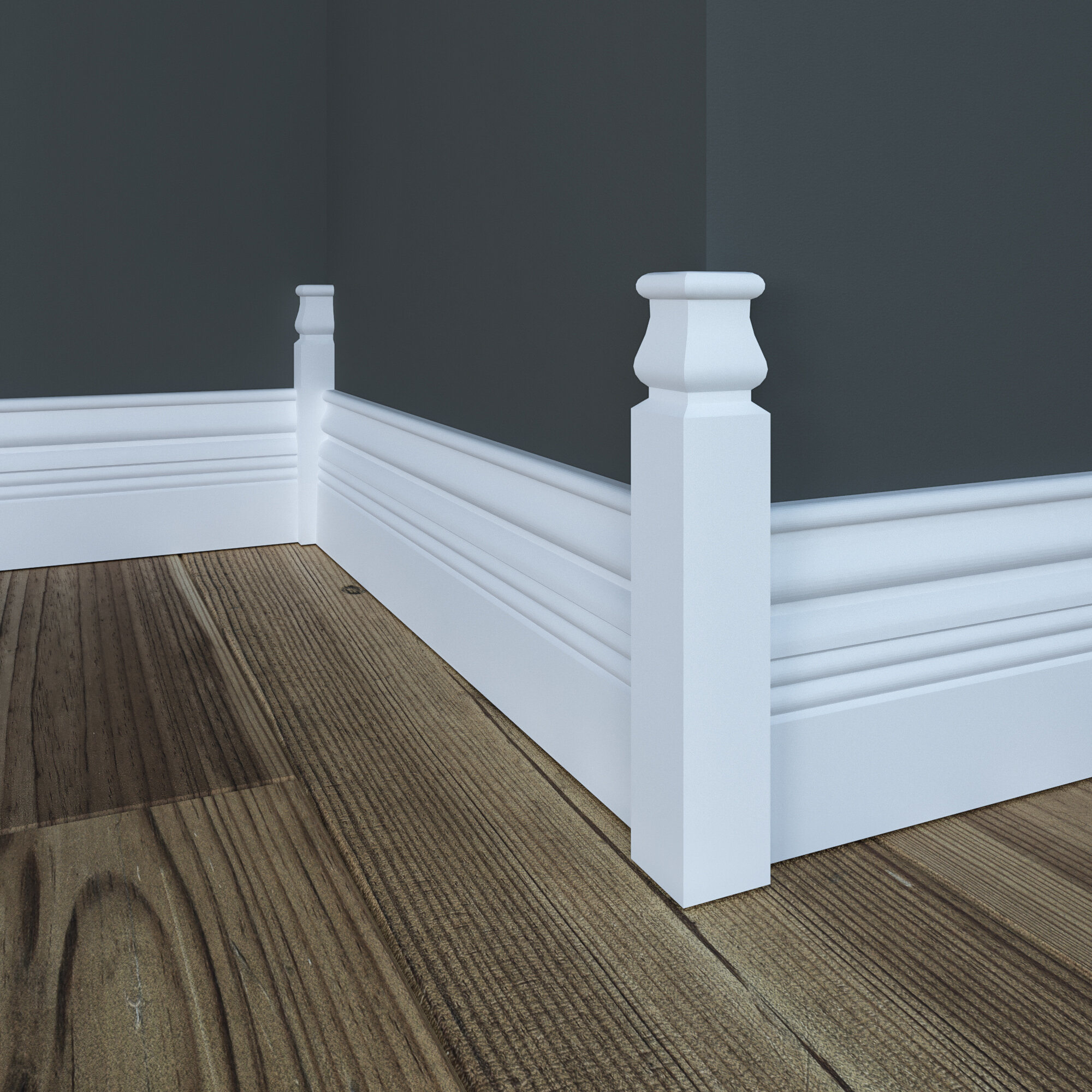Decorative corner trim is an often-overlooked element in home design, but it can significantly impact the overall aesthetic of your space. As someone who has spent countless hours transforming my own home, I can attest to the transformative power of corner trim in adding character and elegance to any room. In this article, I’ll share insights into different types of corner trim, installation tips, and design ideas that have worked wonders in my personal experience. So, let’s dive in!
What is Decorative Corner Trim?
Decorative corner trim refers to moldings or finishes applied to the corners of walls, ceilings, and floors to enhance the visual appeal of a space. It acts as a transition element that can unify various design aspects, such as ceiling height, wall color, or the materials used in the room. But beyond aesthetics, decorative corner trim serves functional purposes too, such as protecting corners from damage and concealing imperfections.
Types of Decorative Corner Trim
1. Crown Molding
Crown molding is a classic choice for adding elegance to your ceilings. It typically curves from the wall to the ceiling and can range from simple to intricate designs.

Pros:
- Adds height and drama to a room
- Available in various styles and materials
Cons:
- Can be expensive depending on materials
- Requires professional installation for complex designs

2. Baseboards
Baseboards are the trim installed along the bottom edge of walls. They serve both decorative and protective purposes, shielding walls from dirt and damage.
Pros:
- Provides a clean finish between walls and floors
- Available in many styles, from simple to elaborate

Cons:
- May need to be repainted or stained over time
- Can be challenging to install without proper tools
3. Chair Rail
Chair rails are horizontal trims installed about a third of the way up a wall. They protect walls from damage and can add a stylish division in wall color or wallpaper.

Pros:
- Adds depth and interest to walls
- Serves as a protective barrier in high-traffic areas
Cons:
- Can make a room feel smaller if not done correctly
- Requires precise measuring and cutting

4. Corner Blocks
Corner blocks are decorative pieces that can be used at the corners of walls when installing moldings. They simplify the installation process and add a unique touch.
Pros:
- Easy to install and eliminates complex cuts
- Available in various designs to suit your decor

Cons:
- Can be more expensive than traditional trim
- May not suit all design aesthetics
Materials Used for Decorative Corner Trim

| Material | Durability | Cost | Appearance |
|---|---|---|---|
| Wood | Very Durable | Moderate to High | Classic and Warm |
| MDF (Medium Density Fiberboard) | Durable | Low to Moderate | Smooth Finish |
| Polyurethane | Very Durable | Moderate | Flexible Designs |
| Plaster | Durable | High | Intricate and Detailed |
Choosing the Right Decorative Corner Trim for Your Space
When selecting decorative corner trim, consider the following factors:
1. Style of Your Home
Your trim should complement the character of your home, whether it’s modern, traditional, or eclectic.
2. Room Functionality
Think about the function of the room. High-traffic areas might require more durable materials.
3. Budget
Determine how much you’re willing to spend. There are options available for every budget.
How to Install Decorative Corner Trim
Installing decorative corner trim can be a DIY project, but it does require planning and precision. Here’s a step-by-step guide based on my experience:
Tools You’ll Need
- Miter saw
- Measuring tape
- Caulk and caulking gun
- Stud finder
- Wood glue (optional)
- Paint or stain
Steps to Install
- Measure Accurately: Use your measuring tape to determine the length of the trim needed for each wall.
- Cut the Trim: Set your miter saw to a 45-degree angle and cut the ends of the trim pieces.
- Dry Fit: Place the pieces together to ensure they fit correctly.
- Attach the Trim: Use a nail gun or hammer to secure the trim in place, ensuring it’s level.
- Finish the Edges: Apply caulk to the seams and paint or stain the trim as desired.
Incorporating Decorative Corner Trim into Your Design
Integrating decorative corner trim into your home design can be an exciting opportunity to express your creativity. Here are some ideas:
1. Layering Trims
Don’t be afraid to layer different types of trims for a unique look. For instance, combining crown molding with a chair rail can add depth.
2. Contrasting Colors
Using a contrasting color for your trim can create a striking visual impact. White trim against dark walls is particularly popular.
3. Accent Lighting
Install LED strip lights along the edge of crown molding to create stunning ambient lighting that highlights your trim.
Maintenance and Care for Decorative Corner Trim
To keep your decorative corner trim looking fresh and vibrant, regular maintenance is essential. Here are some tips based on my personal experiences:
1. Regular Dusting
Dust can accumulate on trim, dulling its appearance. Regularly dust your trim to maintain its beauty.
2. Touch-Up Paint
Keep paint on hand for touch-ups to address any scuffs or chips that occur over time.
3. Inspect for Damage
Periodically inspect your trim for any signs of damage or wear, especially in high-traffic areas. Addressing issues early can prevent more extensive repairs later.
FAQs about Decorative Corner Trim
1. What is the average cost of decorative corner trim?
The cost can vary widely depending on materials, style, and installation. You might expect to spend anywhere from $1 to $5 per linear foot for materials alone.
2. Can I install decorative corner trim myself?
Yes, many homeowners take on this project themselves. With the right tools and patience, DIY installation can be accomplished successfully.
3. What styles of decorative corner trim are popular?
Popular styles include modern minimalist, classical ornate, and farmhouse chic. Consider your home’s style when choosing the trim.
4. How do I clean decorative corner trim?
Use a soft cloth and a mild cleaning solution. Avoid harsh chemicals that might damage the finish.
Conclusion
Decorative corner trim is a beautiful way to elevate your home’s decor, bringing elegance and personality to your spaces. From crown molding to baseboards, the right trim can transform a plain room into a sophisticated haven. I encourage you to explore the various options available and consider implementing decorative corner trim into your next renovation project. Your walls will thank you!